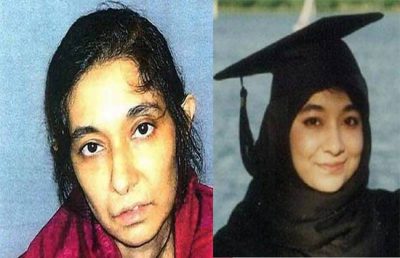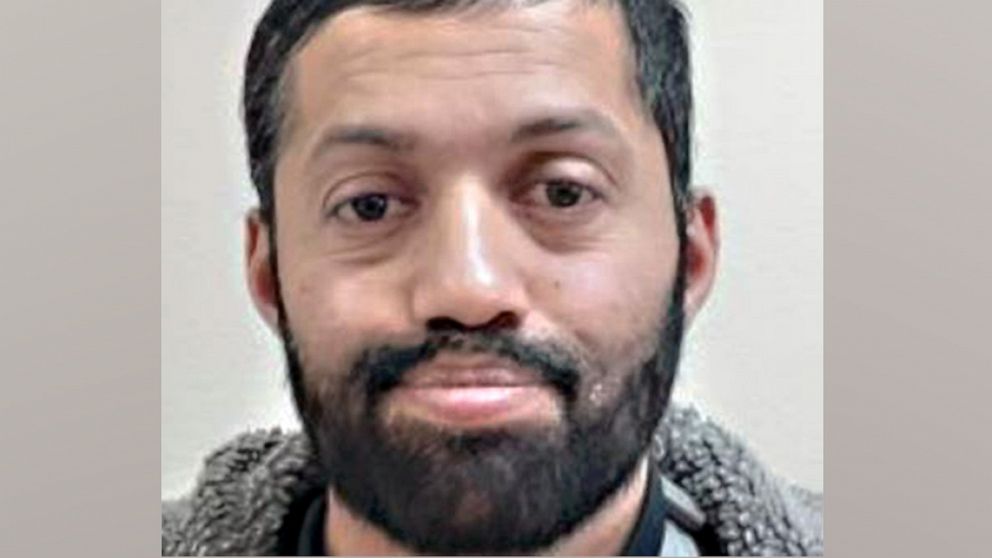The Unspoken Truth: The Texas Synagogue Hostage-taking: A Don Quixote Mission?

All Global Research articles can be read in 51 languages by activating the “Translate Website” drop down menu on the top banner of our home page (Desktop version).
To receive Global Research’s Daily Newsletter (selected articles), click here.
Visit and follow us on Instagram at @globalresearch_crg.
***
Western governments and most media took the opportunity of the synagogue hostage-taking incident near Fort Worth, Texas to claim that it was an example of (Muslim) terrorism and anti-Semitic hatred. The truth was more difficult to explain, including apparent misreporting of the killing of the hostage-taker.
Malik Faisal Akram was on a quixotic mission from Britain to try to free Aafia Saddiqi from Carswell prison near Fort Worth. While the case of Aafia Siddiqi has been an open wound to Muslims, it is largely unknown in the US. Former US Attorney General Ramsey Clark claimed it was the worst abuse of human rights that he was aware of.
Aafia Siddiqi, a Pakistani neuroscientist who should now be about 44 years old, graduated from MIT and received a PhD from Brandeis University. Recognized as an outstanding Muslim woman leader, she and her husband and two children were harassed by the government after the events of Sept. 11, 2001 into leaving the US.
Two years later, in 2003, when she was in a taxi in Karachi, Pakistan, she was arrested with her three children and taken into US custody; the arrest was brutal and her six-month old son was thought to have been killed by being thrown on the road.
Her other children initially disappeared and nothing was known of their whereabouts for some years. It appears that Siddiqi was taken to the US torture gulag in Bagram, Afghanistan, where she became known as “the grey lady”, or Prisoner No. 650, who for years screamed nights from torture and rape. Journalist Yvonne Ridley publicized the story and although the US claimed that no women were held in Bagram, many started to connect Saddiqi’s disappearance with “the grey lady”.
The US had to have realized that it had make an embarrassing mistake in torturing an innocent Muslim woman — fluent in English — who now had an international audience following her story. In 2008 — two weeks after a media event by Ridley that focused on Aafia Siddiqi, a dazed Siddiqi was found with her son (who she did not recognize) crouching by the governor’s house in Ghazni, Afghanistan with bags that reportedly contained directions to bomb US and Afghan sites and liquids in tubes. A warning had recently been issued that a woman was trying to recruit suicide bombers, so she might have been shot on sight. Siddiqi entered a male-only masjid and was then in Afghan custody. At around that time, her daughter appeared at the family home in Pakistan with an identifying sign around her neck; she could speak only English — with an American accent.
While US representatives were arguing with Afghan police about their right to take her, a US soldier shot her twice in the stomach and she was airlifted to an American base for medical help. Rather than charge her for anything that might have rationalized her five years of torture and rape in Bagram, the US charged her with trying to shoot the soldier who had shot her.
Despite showing no evidence to substantiate the charge, Siddiqi was convicted and sentenced to 86 years without parole. She reportedly forgave the judge and those who had judged her. Her family have not heard from her in four years; their attempts to communicate with her were largely blocked. It was rumored that she might have died in 2021. When the Pakistani consulate tried to contact her, she “chose” not to speak with them despite having had many contacts in past years. It was reminiscent of Julia Skripal’s “refusal” to speak to the Russian consul after her apparent murder.
Akram clearly related to the injustice of Siddiqi’s treatment at western hands; he wanted to rescue Siddiqi or at least discover if she was still alive. He flew to the US, where he spent the night in a homeless shelter and purchased a gun on the street. His hostage-taking of several people in the synagogue near the Carswell prison was captured on the live programming of the service and continued for some hours into it. Akram was heard to demand Siddiqi’s release and repeatedly told the hostages that he did not want to hurt them.
The Rabbi, Charlie Cytron-Walker, said in an Anti-Defamation League webinar that Akram’s first demand was to speak with Angela Buchdahl, the senior rabbi at Central Synagogue in New York because he believed ‘she was the most influential rabbi’. For some hours during the event, Akram spoke on the phone to his horrified family; he said he had no intention of harming anyone but assumed he would be killed.
Image on the right is from ABC News

The New York Times claimed that Akram had threatened the lives of the hostages and that the FBI had not realized that the hostages had gone when they went in for the kill because they used a different door than the hostages had used to exit. But according to the Guardian account, video from Dallas TV station WFAA shows people running out of the same door used by the police gunman seconds later: a man who then closed the door and shot off rounds of ammunition along with an explosive, apparently with no warning.
Why did Akram choose a synagogue as a venue to contact Siddiqi? He clearly believed that the Jewish community was the most influential: he had even identified the rabbi who he thought had the most clout in the United States. While his choice was spun as anti-Semitic, it can be seen as an implicit insult to the Christian community.
Akram sacrificed his life in vain: he was not able to help Siddiqi and her story was not even brought forward by the media. Editorials and opinion pieces could have explained this as a story of ongoing Muslim pain instead of weaponizing it as “terrorism”, “hatred”, and “anti-Semitism”. The British and American reactions to this story display and perpetrate the vicious racism that they attributed to yet another of their victims.
*
Note to readers: Please click the share buttons above or below. Follow us on Instagram, @crg_globalresearch. Forward this article to your email lists. Crosspost on your blog site, internet forums. etc.
Karin Brothers is a freelance writer. He is a regular contributor to Global Research.
Featured image is from the author


No comments:
Post a Comment